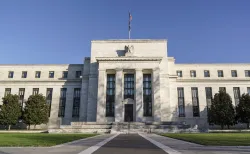Ahead of elections, US Federal Reserve shifts interest rates dramatically to deal with worst inflation
The Federal Reserve on Wednesday cut its benchmark interest rate by an unusually large half-point, a dramatic shift after more than two years of high rates that helped tame inflation but that also made borrowing painfully expensive for American consumers.

The Federal Reserve cut interest rates by half of a percentage point on Wednesday, kicking off what is expected to be a steady easing of monetary policy with a larger-than-usual reduction in borrowing costs that followed growing unease about the health of the job market. "The committee has gained greater confidence that inflation is moving sustainably toward 2%, and judges that the risks to achieving its employment and inflation goals are roughly in balance," policymakers on the US central bank's rate-setting committee said in their latest statement, which drew a dissent from Governor Michelle Bowman who favoured only a quarter-percentage-point cut.
The central bank’s action lowered its key rate to roughly 4.8%, down from a two-decade high of 5.3%, where it had stood for 14 months as it struggled to curb the worst inflation streak in four decades. Inflation has tumbled from a peak of 9.1% in mid-2022 to a three-year low of 2.5% in August, not far above the Fed’s 2% target.
Impact before elections
High interest rates and elevated prices for everything from groceries to gas to rent have fanned widespread public disillusionment with the economy and provided a line of attack for former President Donald Trump’s campaign. Vice President Kamala Harris, in turn, has charged that Trump’s promise to slap tariffs on all imports would raise prices for consumers much further.
Over time, Fed rate cuts should lower borrowing costs for mortgages, auto loans and credit cards, as well as for business loans. Business spending could grow, and so could stock prices. Companies and consumers could refinance loans into lower-rate debt.
Inflation in US
Chair Jerome Powell made clear last month in a high-profile speech in Jackson Hole, Wyoming, that Fed officials feel confident that inflation has largely been defeated. It has plummeted from a peak of 9.1% in June 2022 to 2.5% last month, not far above the Fed’s 2% target. Central bank officials fought against spiking prices by raising their key interest rate 11 times in 2022 and 2023 to a two-decade high of 5.3% to try to slow borrowing and spending, ultimately cooling the economy.
Wage growth has since slowed, removing a potential source of inflationary pressure. And oil and gas prices are falling, a sign that inflation should continue to cool in the months ahead. Consumers are also pushing back against high prices, forcing such companies as Target and McDonald’s to dangle deals and discounts.
(With inputs from agency)
ALSO READ: US Fed cuts interest rates by 50 basis points, first reduction since 2020